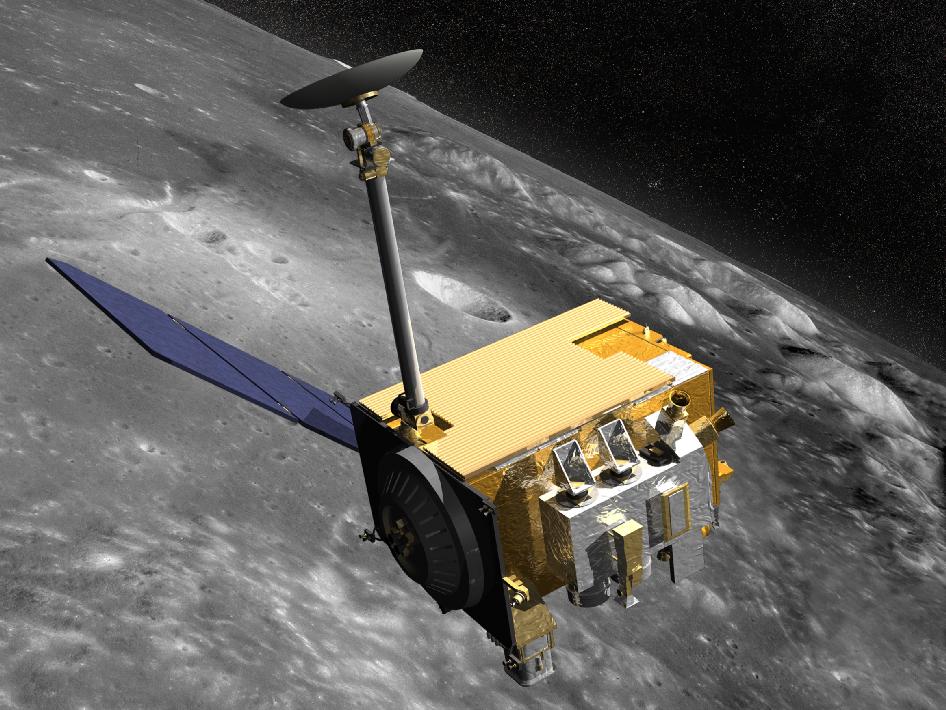Blood Moon 2019: NASA Spacecraft Prepares for Total Lunar Eclipse Amid Government Shutdown
The Lunar Reconnaissance Orbiter will face down the 10th eclipse of its lifetime this weekend, and the team at NASA's Goddard Space Flight Center in Maryland is prepared for the brief lapse in sunlight when the moon goes into shadow on Sunday (Jan. 20).
Spacecraft operations are one of the functions deemed essential for government operations, so many of the LRO employees continue day-to-day work without pay amid the U.S. government shutdown. Additionally, contractors — whose work has been paid for ahead of time through their respective companies — continue their assignments with LRO, project scientist Noah Petro told Space.com.
Petro, who is a space scientist at Goddard — is on call in case something happens with LRO, although he hasn't been asked to come in yet. He is part of a class of federal employees that can respond to operational events as required. That said, much of the preparatory work for LRO's eclipse operations took place months before this weekend's event; its team gathered in meetings, studied this weekend's eclipse and went over the history of LRO eclipse events to prepare, he said. [Super Blood Wolf Moon Lunar Eclipse: When, Where and How to See It]
The solar-powered LRO is in excellent health, but Petro said the team knows it is working with a spacecraft that will turn 10 years old this year. Originally, LRO would keep most of its instruments turned on to perform observations all of the time. But lately, a small number of instruments have been turned off to preserve LRO's battery.
During some past eclipses, LRO's thermal imager — the Diviner Lunar Radiometer — examined the temperatures of the lunar regolith and soil. Diviner usually can "see" the top layer of the regolith, which is a few tens of centimeters thick. However, during an eclipse, the top 1 cm to 2 cm below the surface can change temperature rapidly. The eclipses thus allowed Diviner to look at a different region of the soil than usual.
Now that LRO is older, however, Diviner is turned off during the eclipse along with the spacecraft’s six other instruments, Petro said. LRO won't be performing observations while the moon is dark; instead, it will remain in a power-saving mode to preserve its battery. Before the spacecraft speeds into shadow, the LRO team will turn on its heater for a while to "preheat" the spacecraft, before shutting it off for power saving. With these precautions, Petro said the team expects LRO will sail through just fine, similar to past eclipses.
Petro likened the situation with LRO to operating a cellphone for extended periods when you're away from an electrical outlet or an opportunity to charge the phone. Many people will put their cellphones into power-saving mode, and turn off nonessential apps, to keep the battery going longer.
Breaking space news, the latest updates on rocket launches, skywatching events and more!
"We're confident we can get through it, because we did in the past," Petro said.
"These eclipses are a good experience," he added. "They force us to look at the spacecraft. But I don't want to say they're risky. They are unusual operations, and that is always a challenge."
Due to the cycle of geometric positions between Earth, sun and moon, the next total lunar eclipse won't come until 2021. Petro said that will provide a nice break for the team. They are not really worried about LRO's health during this time, but the lack of eclipses will mean a lack of necessary planning meetings to deal with them — allowing for more time to focus on the ongoing observations LRO performs every day.
Later in 2019, Petro and other employees at Goddard plan to highlight LRO's contributions — which include mapping lunar water ice and cataloging the moon's terrain in high resolution — and highlighting that work along with the science performed by the Apollo moon missions of the 1960s and 1970s. This year not only marks the 10th anniversary of LRO's launch, but also the 50th anniversary of the first crewed landing on the moon, on July 20, 1969.
For now, Petro said he sees the eclipse as an opportunity to get the public interested in the moon and to raise awareness about science activities, especially as NASA plans a Lunar Orbital Platform-Gateway human space station in the 2020s.
Editor's note: If you snap an amazing photo of the January 2019 total lunar eclipse that you'd like to share with Space.com and our news partners for a possible story or image gallery, send comments and images in to: spacephotos@space.com.
Follow us on Twitter @Spacedotcom and on Facebook. Original article on Space.com.

Michael Wall is a Senior Space Writer with Space.com and joined the team in 2010. He primarily covers exoplanets, spaceflight and military space, but has been known to dabble in the space art beat. His book about the search for alien life, "Out There," was published on Nov. 13, 2018. Before becoming a science writer, Michael worked as a herpetologist and wildlife biologist. He has a Ph.D. in evolutionary biology from the University of Sydney, Australia, a bachelor's degree from the University of Arizona, and a graduate certificate in science writing from the University of California, Santa Cruz. To find out what his latest project is, you can follow Michael on Twitter.

